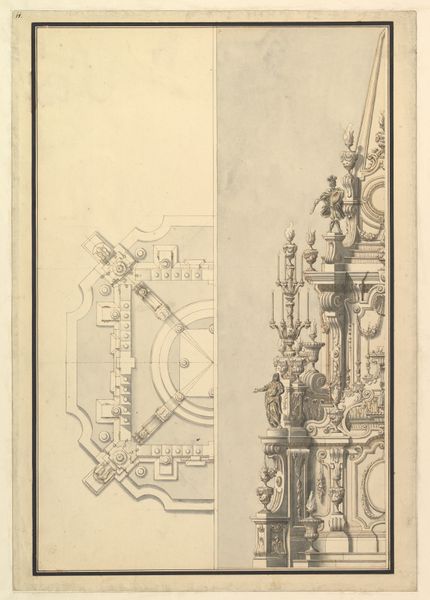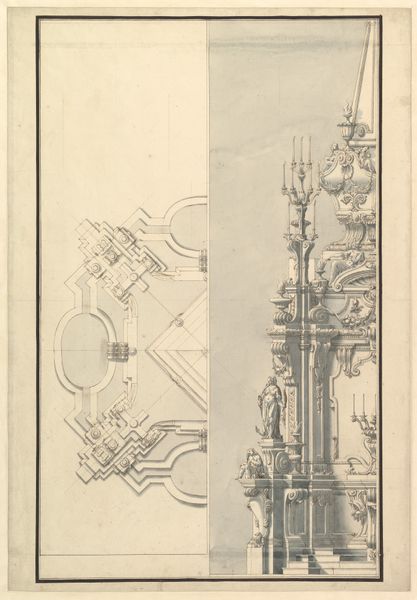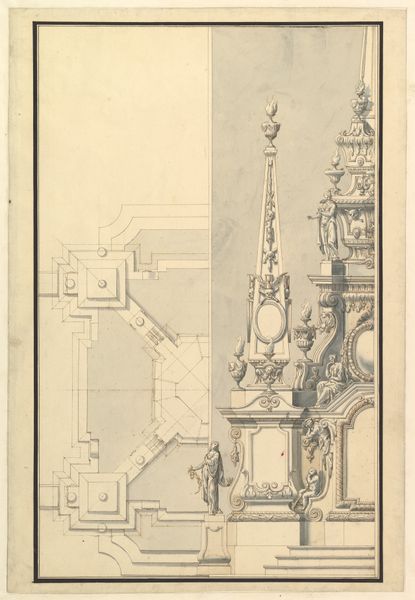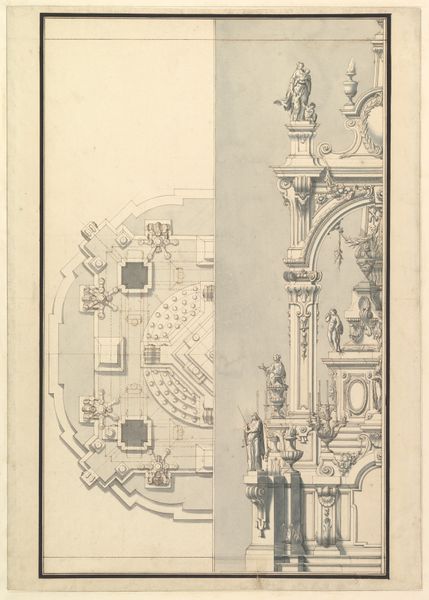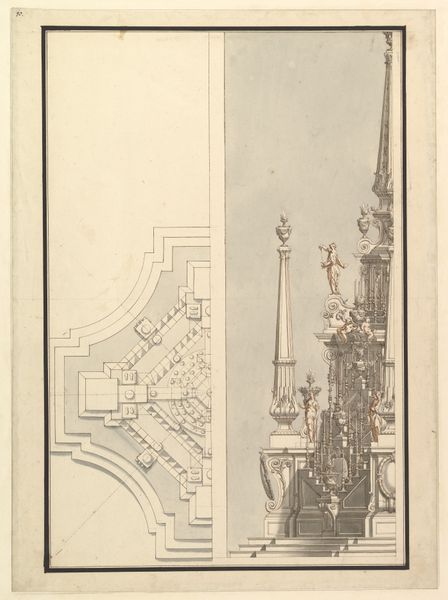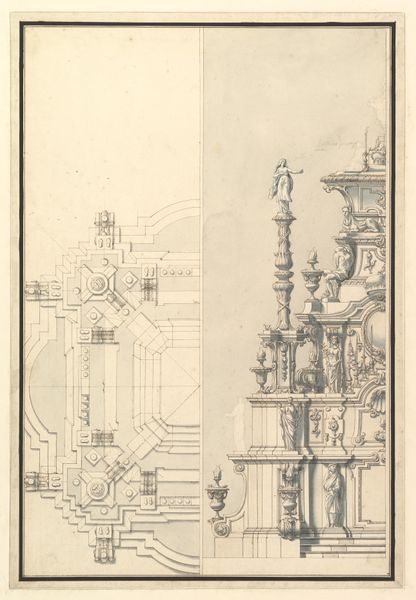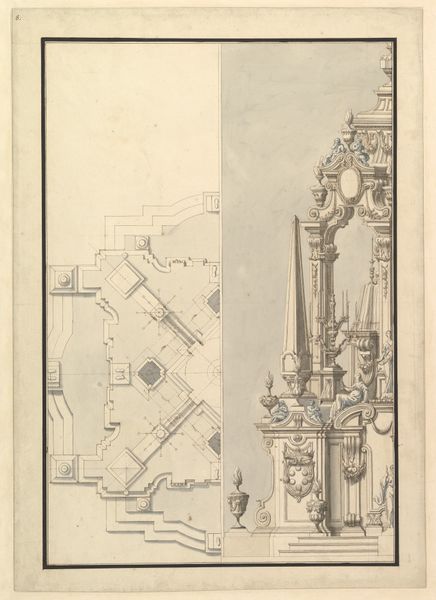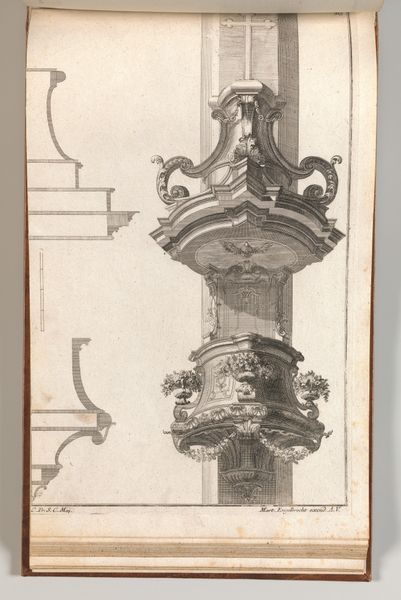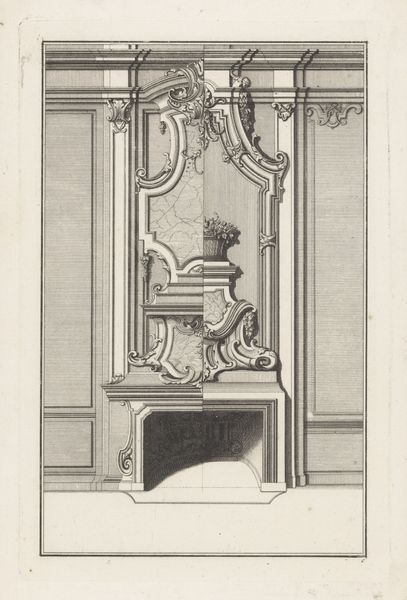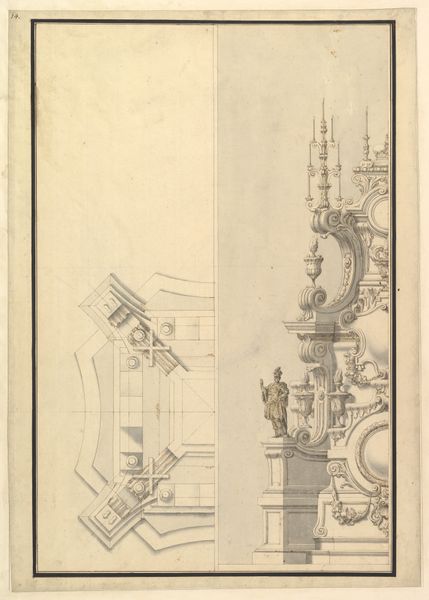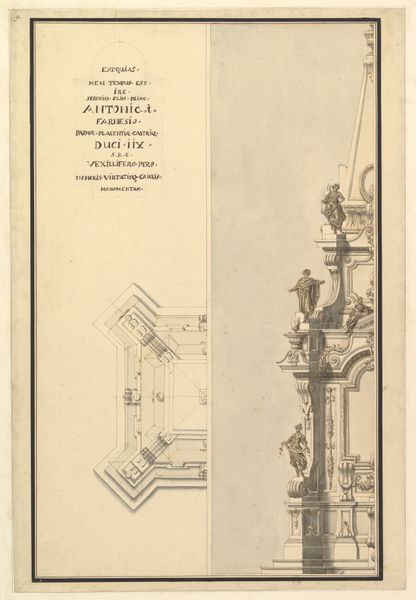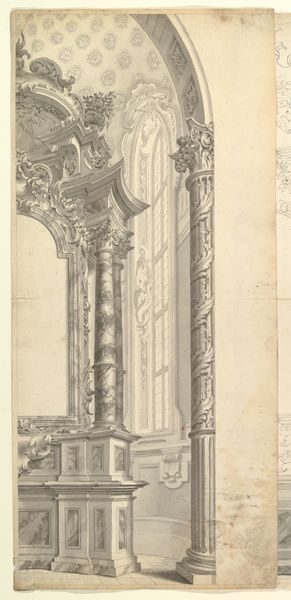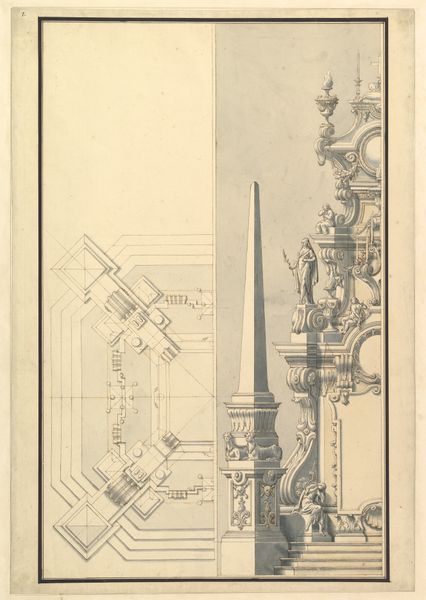
Half Ground Plan and Half Elevation for a Catafalque with Royal Crown Surmounting Casket 1696 - 1756
0:00
0:00
drawing, print, architecture
#
drawing
#
baroque
# print
#
geometric
#
architecture
Dimensions: 20-3/16 x 14-1/4 in. (51.3 x 36.2 cm)
Copyright: Public Domain
Curator: This drawing, held at the Metropolitan Museum of Art, presents us with a half ground plan and half elevation for a catafalque. The artist, Giuseppe Galli Bibiena, likely conceived it sometime between 1696 and 1756. It’s rendered as a print and drawing, demonstrating his mastery of architectural design. Editor: My goodness, it’s giving me a headache just trying to figure out what’s up and what’s down! It feels like an elaborate puzzle, a sort of spatial riddle. Is it supposed to be… playful? Curator: In a sense, yes. The Baroque era was marked by dramatic ornamentation and theatricality, even in mourning. A catafalque wasn’t just a resting place for the deceased; it was a symbol of power, status, and continuity of lineage. This piece reveals much about the socio-political dimensions inherent to mourning practices. Editor: Continuity… that makes sense. It’s so incredibly ornamented! Each figure and flourish must hold some symbolic weight, and the composition directs the eye upward, toward the… afterlife, perhaps? You can almost feel the echoes of ceremony in that rigid design, don’t you think? I imagine music swelling… Curator: Precisely. Catafalques functioned as focal points within complex rituals. They spoke volumes, especially when honoring royalty, about divine right, legitimacy, and the perpetuation of power through generations. Understanding the semiotics is key to decoding this piece. The Royal Crown surmounting the casket, for instance, isn't merely decorative. Editor: Right, it's deliberate. Looking closer, you can sense Bibiena's artistic delight! I find myself wondering if they secretly loved dreaming up all of this elaborate spectacle—like staging their own magnificent drama. Curator: The Baroque artist did function, in many ways, as a stage designer—composing visual arguments, not just aesthetic experiences, as extensions of court power. This work offers us an intersection between art history and political performance. Editor: So much to take in... Looking one last time, the precision still fascinates me. Knowing now it wasn't just ornamental—but meaningful. I won't look at funerals the same way again, will I? Curator: Perhaps understanding their performance can provide insight to power and resilience through time.
Comments
No comments
Be the first to comment and join the conversation on the ultimate creative platform.
